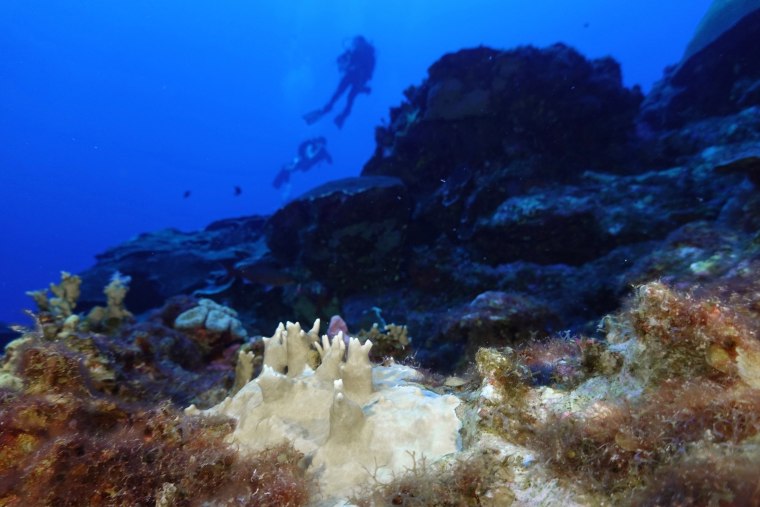[ad_1]
Coral health is intertwined with ocean temperature because invertebrates are extremely sensitive to heat stress. When corals are stressed, they turn white as they release symbiotic algae that live in their tissues. Bleaching is a sign that coral health is in danger.
“When a coral bleaches, it does not mean it is dead. It means it is weak and at risk of dying if conditions do not improve,” said Ana Palacio, assistant scientist at the Cooperative Institute for Marine and Atmospheric Studies, a research institute based at the University of Miami in partnership with NOAA. .
Corals are critical ecosystems that support a wide range of fish and aquatic species, helping to feed coastal communities and attract tourists. The economic value of reefs is estimated at 2.7 billion dollars a year, according to a 2020 report from the Global Coral Reef Monitoring Network.
“They protect our coast. They offer protection against storms and hurricanes. They have great value for our economy and security,” Palacio said.
Coral ecosystems are among the ecosystems that scientists believe are most at risk from global warming. In 2018, the United Nations Intergovernmental Panel on Climate Change estimated that Between 70% and 90% of the world’s coral reefs. would disappear if global average temperatures crossed the threshold of 1.5 degrees Celsius above the preindustrial average.
Last year was the hottest ever recorded on Earth. Average global temperatures came close to it threshold for the first time, although scientists believe that temperatures were driven by El Niño and that 2023 was an anomaly.
In Florida, as sea surface temperatures rose, bleaching began early in the season, experts said.
“Normally, bleaching will be observed in the northern hemisphere between August and September. We started seeing bleaching in July of last year,” said Phanor Montoya-Maya, a marine biologist with the Coral Restoration Foundation, an organization that collects, restores and repopulates corals.
Palacio said the region saw widespread mortality of elkhorn and staghorn corals, two species that have been the focus of restoration efforts.
“In some places, about 20% of those populations survived,” Palacio said of the restored corals. “We’re focusing our hope on why those corals survived and what they can tell us about resilience and how corals can be more resilient.”
The latest global coral bleaching event It occurred in 2014 and lasted until 2017. More than 56% of the world’s reef areas experienced temperatures that could cause bleaching during that period.

In an email on Monday, Manzello said that 54% of the world’s coral reef areas had experienced bleaching-level heat stress in the past year and that the event was poised to become the worst bleaching event. of history.
“The percentage of reef areas experiencing bleaching-level heat stress has increased about 1% per week,” Manzello said. “This event is likely to exceed the previous peak.”
Montoya-Maya said a bleaching alert is now in effect in Florida, even earlier than last year. She said the Coral Restoration Foundation was preparing for a busy summer in response to another bleaching event.
The natural El Niño pattern has begun to dissipate and NOAA’s Climate Prediction Center estimates there is a 60% chance of La Niña developing this summerwhich could help cool Atlantic waters and allow some corals to recover, at least temporarily.
“This is quite heartbreaking and will cause damage to many reefs around the world,” Palacio said. “I hope this bleaching event creates some traction and that people start to care more and pay more attention to what’s happening with the climate.”